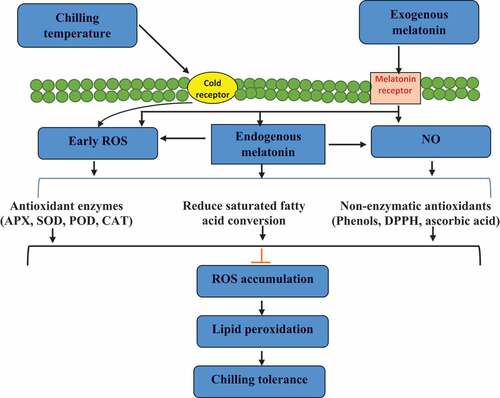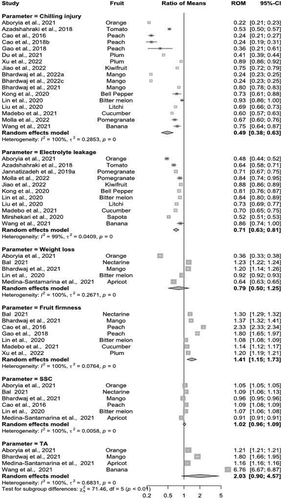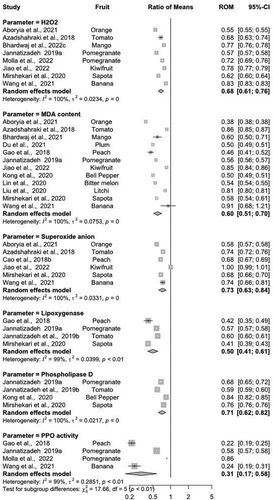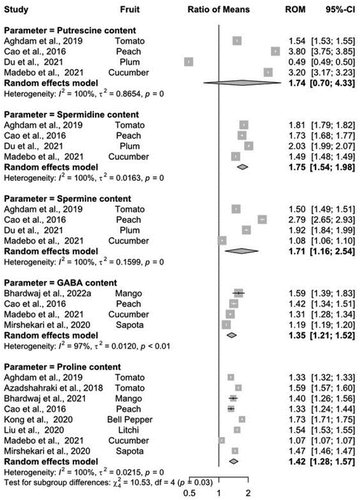Figures & data
Table 1. Chilling injury symptoms expressed on cold-stored fruits and vegetables.
Figure 1. Possible mechanism of melatonin-mediated chilling tolerance in the fruit and vegetables. .

Table 2. Effects of postharvest application of melatonin, storage condition and duration on CI and quality parameters in different fruits and vegetables.
Figure 2. Summary of implications indicating the role of exogenous application of MT on chilling injury, electrolyte leakage, fruit firmness, weight loss, SSC and TA in different fruits and vegetables. Change in all parameters across individual genotypes is given by the values in the ‘Ratio of Means’ column. Where, Cl = confidence level; ROM = ratio of means. .

Figure 3. Summary of implications indicating the role of exogenous application of MT on the inhibition of H2O2, MDA content, superoxide anion, lipoxygenase, phospholipase D and PPO activity in different fruits and vegetables. Change in all parameters across individual genotypes is given by the values in the ‘Ratio of Means’ column. Where, Cl = confidence level; ROM = ratio of means.

Figure 4. Summary of implications indicating the role of exogenous application of MT on phenolics, ascorbic acid, DPPH, PAL, CAT and SOD activity in different fruits and vegetables. Change in all parameters across individual genotypes is given by the values in the ‘Ratio of Means’ column. Where, Cl = confidence level; ROM = ratio of means.

Figure 5. Summary of implications indicating the role of MT treatment on putrescine, spermidine, spermine, GABA and proline content in different fruits and vegetables. Change in all parameters across individual genotypes is given by the values in the ‘Ratio of Means’ column. Where, Cl = confidence level; ROM = ratio of means.

